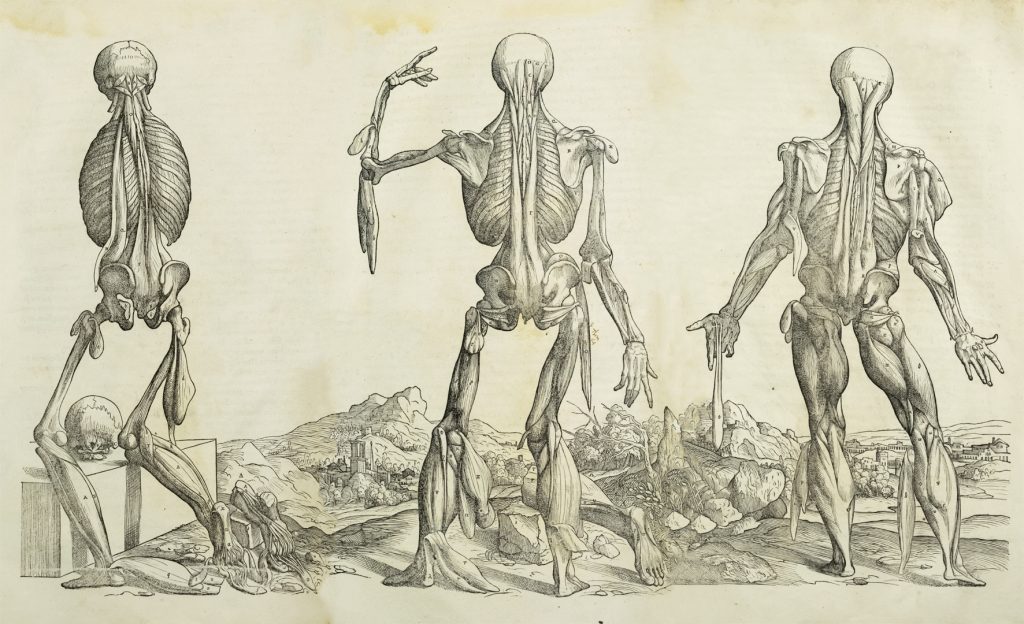Andreas Vesalius and De Humani Corporis Fabrica

“I am not accustomed to saying anything with certainty after only one or two observations.”
The art of anatomy became a science in 1543 at the publication of Vesalius’ 7 volume work that was De Humani Corporis Fabrica, changing from a practice of tradition to one of investigation. Basing his findings on the dissections of cadavers, Vesalius was able to debunk long-held myths of the human body that dated back to the teachings of Galen, a physician of Ancient Greece.
Each volume of the book gives details on different systems of the human body; bones and cartilage, ligaments and muscles, veins and arteries, nerves, organs of nutrition and generation, the heart and associated organs, and finally the brain. However it is the contents of the second volume on ligaments and muscles that draw most attention. This volume contains a series of illustrations known as the “Muscle Men.”
The Muscle Men are a collection of 14 illustrations depicting cadavers at different stages of dissection consequently revealing the different layers of muscles and ligaments of the human body. The specimens are posed rather dramatically, from one pointing at something off in the distance to another seemingly contemplating his own existence. The illustrations are incredibly detailed with regards to their anatomy, but it is the backdrop of each picture that adds further intrigue.
Each muscle man is set before the glorious hills of Padua, the city where Vesalius was Professor of Anatomy and Surgery, and a city with a great medical reputation. What’s more, if each image were to be put in order a panoramic view of of the city would be created.

Images from Vesalius’ work were used in a previous heritage exhibition at the College, “Our Science and Art.” An adaptation of the muscle men was created and used as the staple image of the exhibition, as well as accompanying marketing materials. Admittedly not a concern at the time, these images now raise questions on issues of consent. Although it cannot be confirmed, the cadavers used in Vesalius’ textbook were most likely the bodies of executed criminals or corpses stolen from graveyards. Either way it is unlikely that they consented for their bodies to be used for scientific research.
As a heritage team we are reframing the way we look at our collections, admitting our past faults, and challenging ourselves to tell more of the stories that may be uncomfortable. In our own future practice, more interpretation will be given when using anatomical illustrations in hopes of creating an open discussion on the history of anatomy and issues of consent.
Listen to episode 3 of Body of Work Bites here: https://heritage.rcpsg.ac.uk/learn


Leave a Reply
You must be logged in to post a comment.